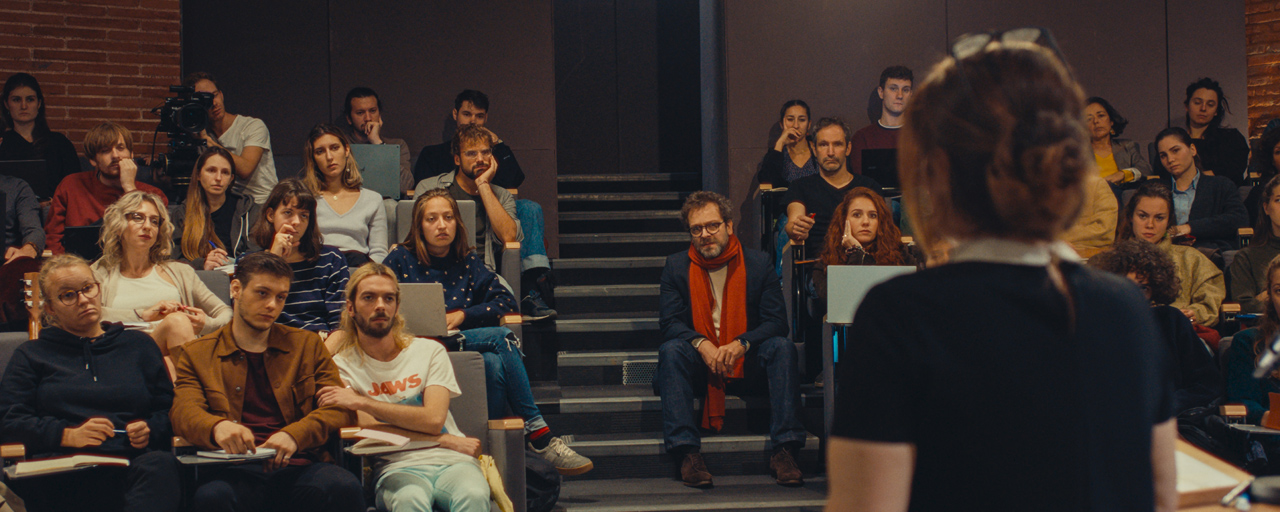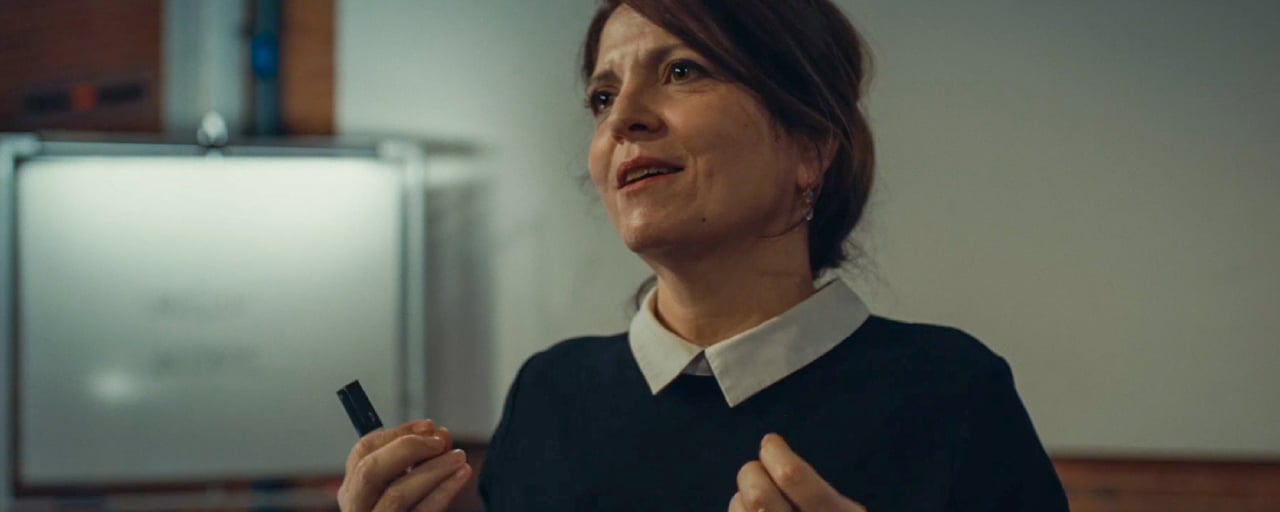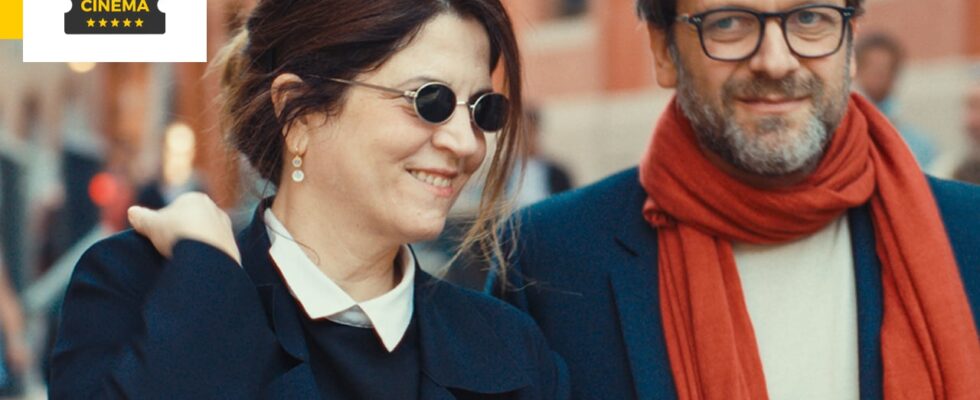Agnès Jaoui and Jonathan Zaccaï are showing this Wednesday, May 10 in Frédéric Sojcher’s film “Le Cours de la Vie”. A lesson in cinema and life on transmission.
How about taking a lesson in cinema with Agnès Jaoui? In Le Cours de la vie by Frédéric Sojcher, the actress plays Noémie, a screenwriter invited to do a masterclass in the film school of Vincent (Jonathan Zaccaï), her childhood sweetheart. Through this extraordinary course, she will teach Vincent and his students that the art of writing a screenplay is the art of living passionately.
Also worn by Jonathan Zaccaï, Géraldine Nakache and young Lise Lomi, Guillaume Douat and Nastasjia Sojcher, the feature film is inspired by Alain Layrac’s essay Writing workshop: Fifty tips for a successful screenplay without missing out on your life that the director himself published in the collection he directs at Hémisphères editions. Alain Layrac also wrote the screenplay for Cours de la vie with the help of Frédéric Sojcher.
Director of Filmmakers at All Costs, I Want to Be an Actress and HH, Hitler in Hollywood, Frederic Sojcher is also a professor at the University of Paris 1 Panthéon-Sorbonne where he teaches for the Master’s degree in cinema “screenplay, direction, production”.
He explains: “I proposed to Alain to adapt his essay to the cinema. Was it possible? Alain seemed skeptical: a test is not a film! We persevered, exploring the idea that everything would take place during a day of a scriptwriter’s masterclass at a film school.
Unity of place, unity of time, unity of action, we found the golden rule of classical dramaturgy! With an essential addition: a united love story alongside the screenplay lesson.”
And it is for the needs of this love story that the central character has become a screenwriter.
Tabotabo movies and Sombrero movies Jonathan Zaccai and Agnes Jaoui
“It was important to introduce the love story. These reunions tell how an old love can have an impact on behavior thirty years later. What if Noémie not only gave a masterclass for the students of the school but also addressed someone in particular? The subtext of his course, at first mysterious, reveals a more intimate register over the course of the day. There are always two parallel narratives that complement each other.”
And the film is indeed made up of two parts, the first is the masterclass during which Noémie gradually takes her ease and manages to capture the attention of previously unmotivated students. The spectator himself has the impression of attending this course, in particular thanks to the system put in place.
The masterclass is framed with three cameras, which film the room, close-up Noémie and the students. The images from these three cameras are edited in parallel with those from a fourth camera. Thus the spectator has the impression of attending this course while remaining sensitive to the emotions of each thanks to the close-ups on the faces.

Tabotabo movies and Sombrero movies
The course of life
The second part, which takes place outside the boardroom, focuses more on romance and the unsaid that can sometimes influence lifelong decisions. How to react to an old love who left without any explanation? How to approach the reunion with a loved one in the past?
Filmed this time with a single camera fitted with machinery allowing the fluidity of the movements, this second part acts as a breath and allows to better understand the lesson of cinema and life of Noémie.
To be a teacher or an artist?
Transmission is also a central theme of the film. Noémie and Vincent try to transmit their knowledge and their love of cinema to the students. An important theme for the director and professor Frédéric Sojcher who explains:
“The question of transmission is at the heart of the Course of Life, but also of my own life. This is a dilemma that arises for Vincent, as it does for me: to be a teacher and/or to be an artist? What is a filmmaker when he is no longer filming?
We do not have the same answer, the character of the film and me. I decided not to give up filming, even if it’s difficult, even if I could know fifteen refusals during the last decade, even if I haven’t made any fiction since HH, Hitler in Hollywoodtwelve years ago…

Tabotabo movies and Sombrero movies
The course of life
This difficulty in filming, which all filmmakers can encounter at some point in their life, does not take away the desire to do it, the determined will to do it – I have shot five feature films, three fiction films and two documentaries – and, above all, the need to do so.
I sincerely think that you teach students better when you make films and know the issues of production from the inside. This pas de deux between thinking and doing is essential; the university needs this practical education as much as film studies. You have to link them.“

Tabotabo movies and Sombrero movies
Agnes Jaoui
A renowned composer
For the music of his film, Frédéric Sojcher called on the legendary composer Vladimir Cosma, author of several hundred film scores, including The Adventures of Rabbi Jacob, The Tall Blond with a Black Shoe, La Boum, Diva, Le Père Noël is garbage or even My Father’s Glory.
For The course of life, he accepted that the director choose from the catalog of music he has created for other films. In addition to these musics, Vladimir Cosma also composed a piece and an original song (And if…) that we hear in the opening and closing credits of the film.
This luminous and tender feature film is to be seen in theaters this Wednesday, May 10.
